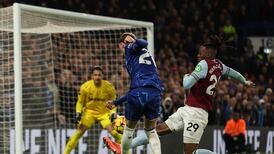From Friday, the World Cup chatter will be all about who was drawn against who, who’s playing where, as the draw begins to make next year’s tournament suddenly seem very real. Before that happens though, one more detail of how the tournament is going to look has just been confirmed, as Adidas revealed the design for the World Cup Ball, the Brazuca.
Named by a fan poll in Brazil that drew almost a million votes, the Brazuca was branded for a colloquial phrase that supposedly references something intrinsically Brazilian in style. It’s also a phrase sometimes shouted in approval of a skillful move.
Made up of six interlocking panels (compared to the eight panels of the 2010 World Cup's Jabulani, or the 32 of the iconic 1970 World Cup Telstar), the Brazuca features a swirling multi-color ribbon design that is intended to evoke the Brazilian tradition of wish bracelets (at a recent company launch of the national team strips, the ribbons were handed out to members of the press as part of the presentation).
Local twist
In a further local twist, and a play on the adage that all Brazilian children are "born with a ball at their feet", the company are donating copies of the ball to every baby born on the day of the ball's release, December 3rd. The ball went on sale yesterday for $160 (€118) in the US.
Eagle-eyed viewers may actually have seen a disguised version of this ball already. Under development since the end of the 2010 tournament, the ball has been tested by some 600 players, including the Adidas-sponsored Lionel Messi and Bastian Schweinsteiger, and by teams including Milan, Bayern Munich and Argentina. Most notably the ball was used in a recent Argentina v Sweden friendly and in the Under-20 World Cup, painted in an older design.
Previous balls have met with varying degrees of approval. A variation on the "Tango" design ran from 1978 to 2002, but since that 2002 World Cup in particular, both the design and the structure of the World Cup ball have been changed with each iteration, often prompting debate among players, especially goalkeepers and dead ball specialists, about how the alterations affect the consistency and flight of the ball.
'Bouncing ball'
In 2002, when the "Fevernova" debuted for the Japan and South Korea World Cup, it was labelled a "ridiculous kiddie's bouncing ball" by Gianluigi Buffon, while the 2010 "Jabulani" was described variously as "a beach ball" (Iker Casillas) and "dreadful" (David James), after its "grip and groove" surface on 3D panels appeared to perform erratically at altitude in pre-tournament friendlies.
In fairness to Adidas, most complaints have tended to come pre- rather than mid- tournament – suggesting one or two athletes have historically got their excuses in early.
The company can also claim one truly historical significant tech innovation being met with approval by players – their innovation of replaceable studs is widely credited as helping West Germany come from behind to beat Hungary in the rain in the 1954 World Cup final.
Messi said of the 2014 ball: “I’ve had the opportunity to test Brazuca and it’s great.”
As might be expected, Adidas are talking up the performance and stability of the latest ball, but expect opinions on it to form one of the minor discussion threads between now and the World Cup.
And then expect the same in four years time – the ball reveal comes hard on the heels of Adidas and Fifa extending a partnership that began with the 1970 World Cup in Mexico and will now run until at least 2030.
What innovations can we expect between now and then? Well, as one wag put it at a press event to preview the ball at Adidas HQ in Portland, during which a prototype of the six panel ball was reverently exhibited: "Doesn't a tennis ball have only two panels?"
Guardian Service











